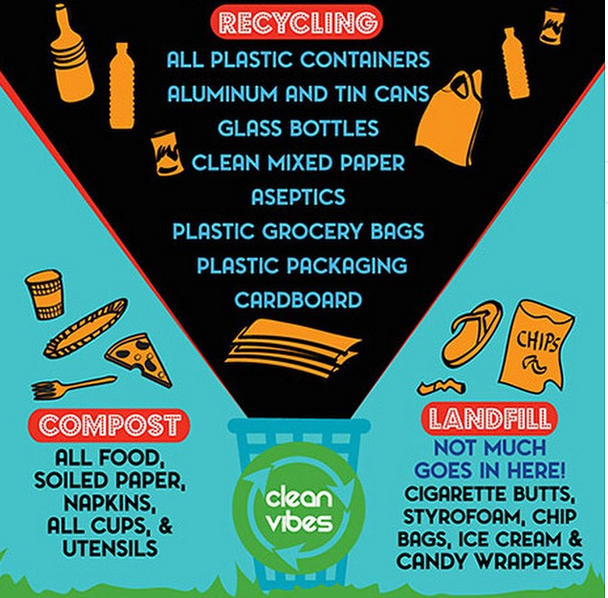While planning for post-graduate life, my friends and I have recently been discussing which of the upcoming music festivals we want to attend this Spring and Summer. And we’re not the only ones. “According to [a] study, in the past year, 1 in 10 people have attended a music festival and 1 in 5 millennials have attended a music festival.” Perhaps it is the communal atmosphere, performance of a variety of bands, and spiritual experience that have a variety of people from all different geographical locations eager to attend. Taking place in Tennessee, the festival Bonnaroo has grown in size and I want to be a part of that growth for more than one reason.
While thinking about plans, I began to wonder about the sustainability of such large music events. If a household of 2 people generates around 60 pounds of trash in a week, how much trash do you think over 90,000 people at a long festival like Bonnaroo would produce? The answer? A lot. The hosts of Bonnaroo are in fact very aware of this and in response, “aspire to be the greenest festival.” As a result, they have recently enacted programs to further sustainability efforts at their event.
One of these programs s the “BonnaROOTS” meal system, where communal meals composed of locally sourced organic foods are available for attendees and staff alike. In 2014, 100 people attended them. The meal was prepared and cooked by volunteers and thus remaining economical as well as sustainable.
They also established the Refill Revolution program. This was a program to simultaneously reduce plastic waste and keep patrons hydrated in the hot Tennessee sun. Offering a steel reusable water bottle for only $5 and reusable beer cup for only 15$, provided incentives to reduce and reuse were high. As a bonus, the beer cup came filled with ice cold beer and reduced the price of each beer purchase by a dollar! The Refill Revolution program actually had a dramatic impact- it “diverted 400,000 plastic water bottles and 30,000 beer cups from the landfill.” To keep the initiative moving forward, they are now offering a pre-sale of those reusable cups along with tickets in 2015.
A rideboard was also created as a tool for enabling attendees to be sustainable. Through this system, Bonnaroo goers could connect and communicate with each other in order to set up carpooling and ride sharing, and ultimately decrease the amount of fossil fuels being released on account of the festival.
Bonnaroo also helps to provide incentives for vendors themselves to be sustainable. Named the Sustainable Vendor Badge, merchants were prompted to sell local and organic goods, carpool, and avoid using toxic cleaning substances. Those that were successful would receive the award from the festival.
Although these creative programs may seem small or silly on a surface level, when enacted within such a large volume of people, they have a huge impact. These sustainable efforts make my desire to attend the festival stronger and make me optimistic for the future of how such large events will run! See you in 2015 Bonnaroo.
To see more sustainable details about the festival, click here.
Written by Julie Elliot, Class of 2015

